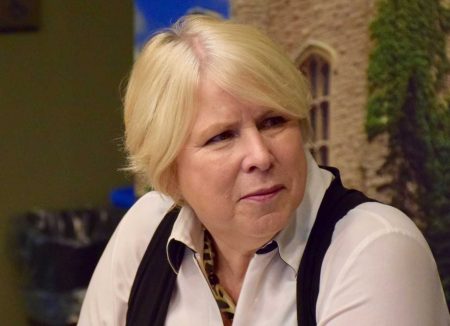
Benefits for University of Guelph students from recent changes to the Ontario Student Assistance Program (OSAP) were discussed on campus today with the province’s higher education minister.
Deb Matthews, minister of advanced education and skills development, met with students in a round table chaired by Charlotte Yates, provost and vice-president (academic).
Early this year, the province announced plans to implement what it called the “most ambitious reform of student financial assistance in North America.”
The changes took effect this fall.
Under the new program, eligible students whose parents make less than $50,000 a year will receive enough funding in OSAP grants and loans to cover the average cost of tuition. An estimated 210,000 Ontario students will be eligible.
“Going to college or university is a wonderful opportunity for young Ontarians,” Matthews said. “That’s why this government is committed to making it as easy and affordable as we possibly can for students, so that they can pursue their dreams, fulfill their potential and get the skills they’ll need for the jobs of tomorrow.”
The changes also provide more and larger grants and loans; new opportunities for mature, married or parent students returning to school; and tools that make it easier to apply for and repay OSAP loans.
“We applaud the government for redesigning OSAP, providing unprecedented financial support and streamlining the process,” said president Franco Vaccarino.
“Improving OSAP benefits the University of Guelph and all other Ontario universities by ensuring that more motivated, qualified students have access to a quality education, enabling them to reach their full potential.”
Round table participant Chelsea Mulvale, president of the Central Student Association (CSA), said the government’s changes mean some students now receive more OSAP funds than ever before. But she called for more information about eligibility and about needs-based distribution of funds.
Initial reports indicate the number of U of G students applying for OSAP this semester rose by about 10 per cent over last year.
Along with the OSAP changes, the University has made student support a high-priority area, Yates said. Spending on student scholarships and bursaries increased by $2.4 million from 2015 to 2016.
Overall University spending on scholarships and bursaries increased by about 15.7 per cent from 2012 to 2016, she said.
Other U of G/OSAP-related highlights:
- U of G has a lower-than-average loan default rate of 2.4 per cent (3.6 per cent province-wide);
- U of G has higher-than-average employment rates for graduates. For U of G graduates, the employment rate within six months of graduation is 91.1 per cent, compared to 88 per cent provincially. Two years after graduation, the employment rate for U of G grads is 94.5 per cent, compared to 93.9 per cent province-wide.
